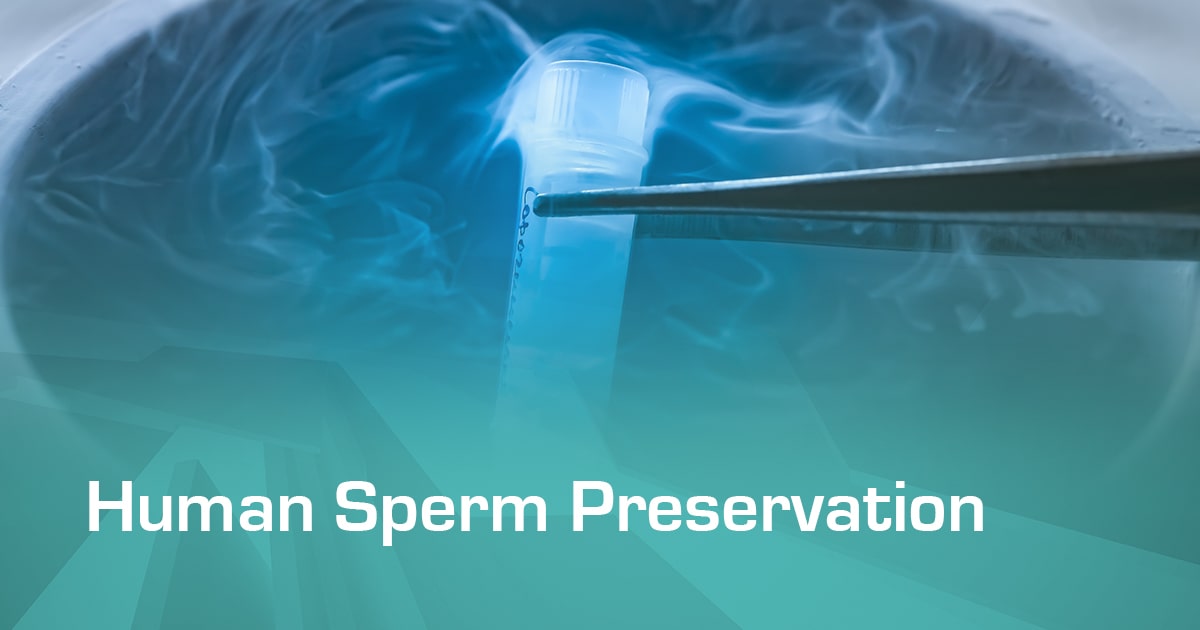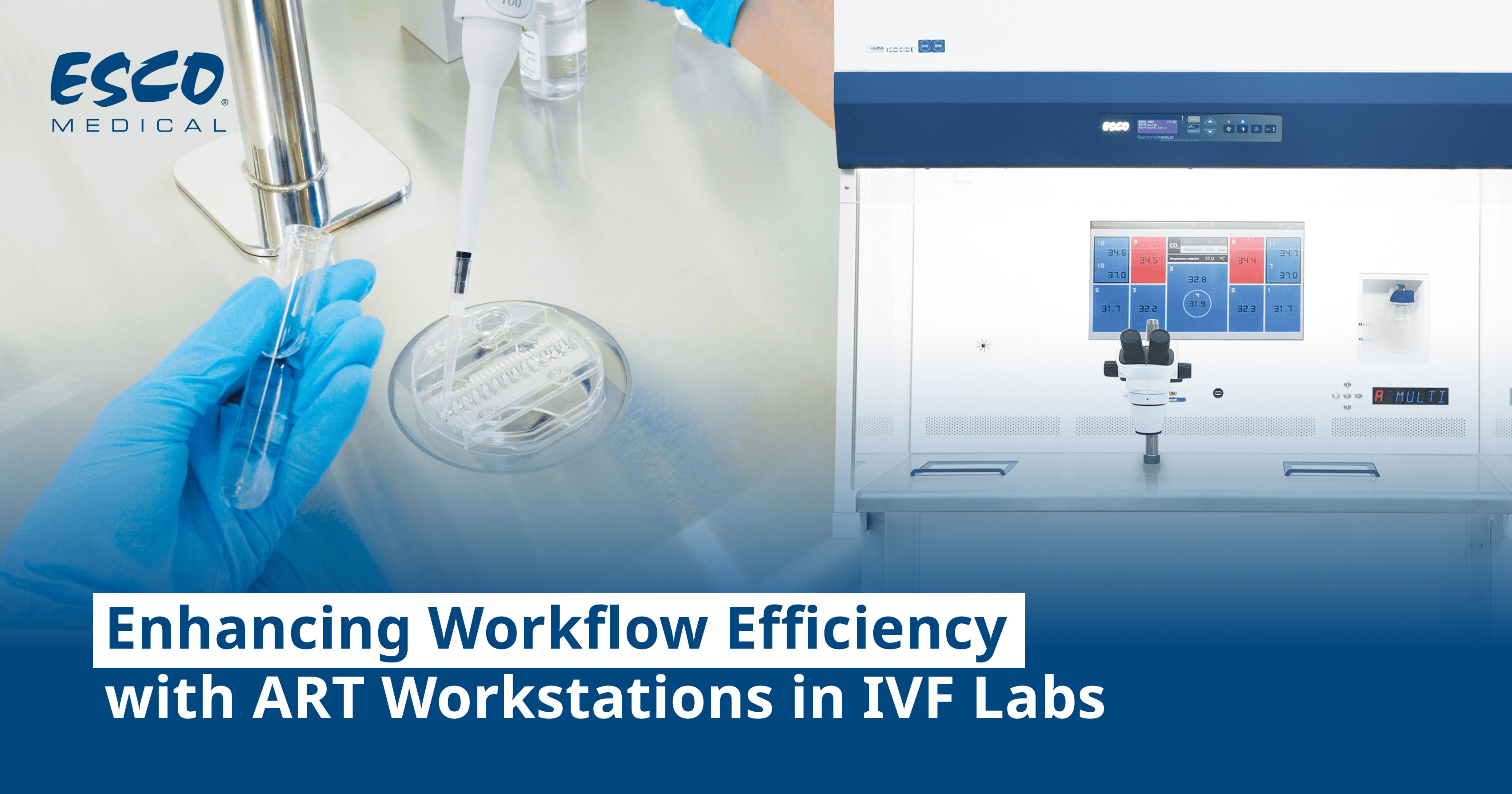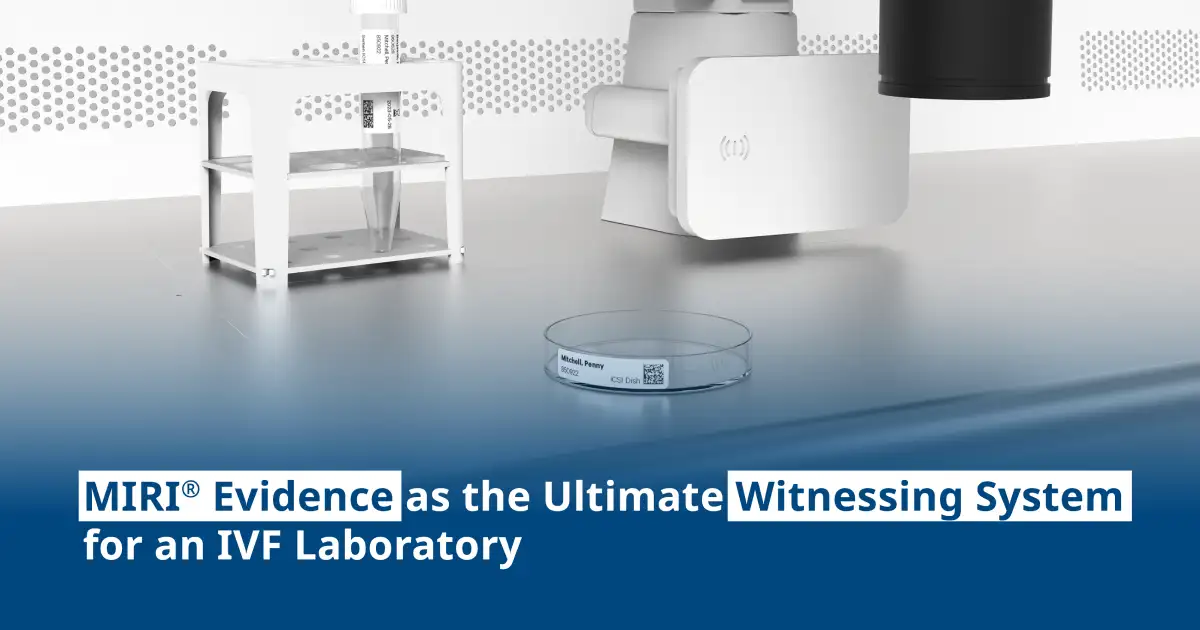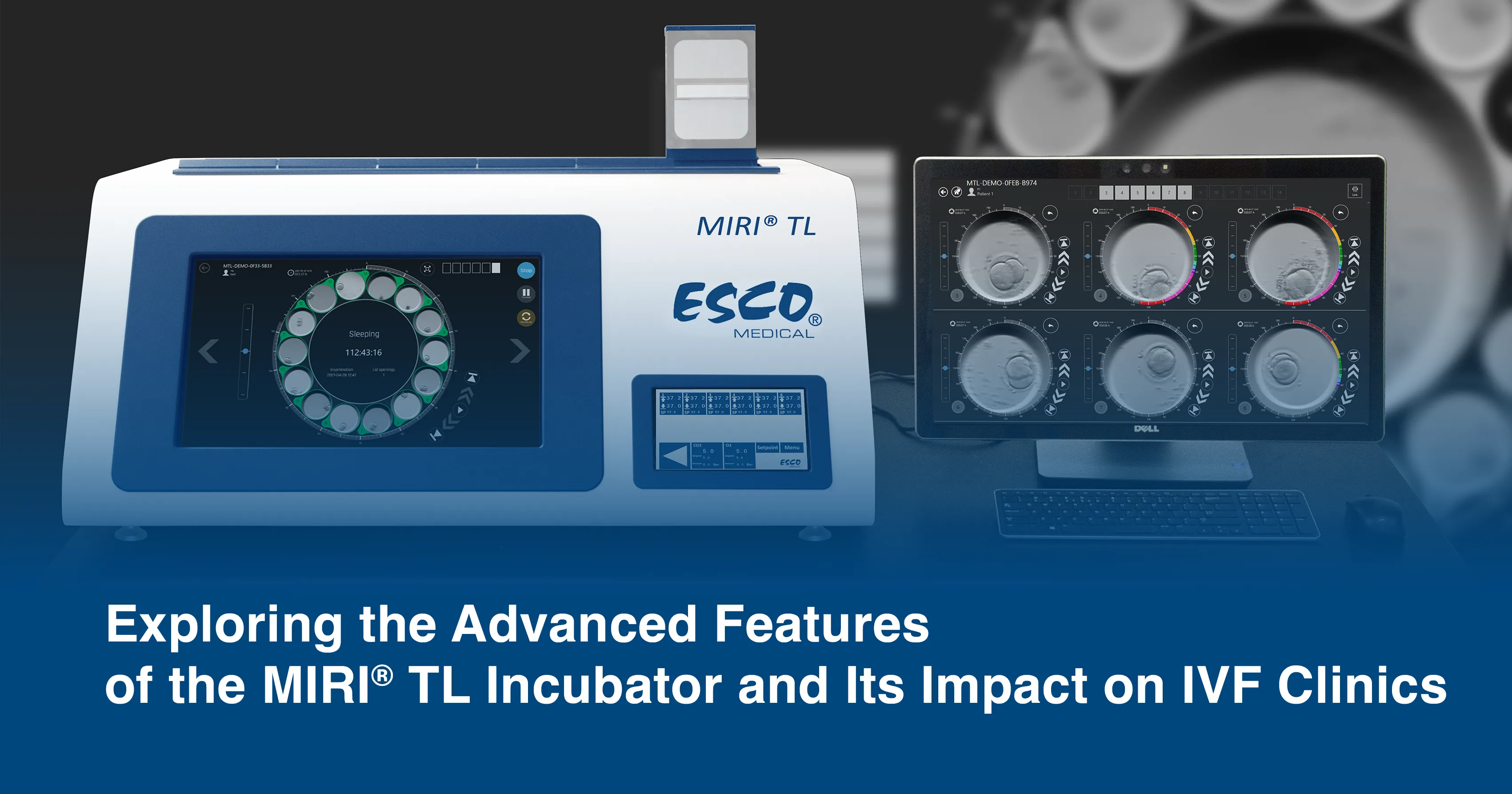
OVERVIEW
Currently, sperm cryopreservation is widely developed, targeting backup storage for in vitro fertilization (IVF), the establishment of sperm banking, or to maintain fertility before therapy for malignant diseases or for future use.
TECHNIQUES OF HUMAN SPERM CRYOPRESERVATION
Currently, the most common method for preserving human sperm is cryopreservation. Cryopreservation is a physical process that involves using low temperatures to suspend biochemical reactions and metabolic activities in cells, to preserve cell structure and function. As a result, cells can be preserved for a very long time2. Currently, there are two common methods of cryopreservation of spermatozoa: slow freezing and vitrification.
Besides the benefits of cryopreservation, freezing as well as thawing produces major changes in the cell that have a negative impact on cell viability and function tissue. The cooling process leads to the freezing of intracellular and extracellular water, thereby increasing the concentration of solutes in the remaining liquid phase. This leads to an osmotic imbalance between the cell and the environment, water from the cytoplasm is drawn out, the cell shrinks, and if the cell is too small, damage to the lipoprotein membrane occurs. will not be able to recover. On the other hand, the formation of intracellular ice crystals also causes mechanical damage to the cell membrane structure and internal organelles. To limit this damage, cryoprotectant agent (CPA) is added to the sperm freezing medium 2.
CPAs are substances that are soluble in water and interfere with the transition between water and ice. They interact with biological molecules that act as a substitute for water in the cell, thereby limiting the formation of ice crystals inside the cell when the temperature is lowered. And another role of CPA is equally important to protect cells at low temperatures. Besides the benefits of CPA, most CPAs have cytotoxic potential and toxicity of CPA is directly proportional to concentration and exposure time, especially at physiological temperature1.
Slow freezing
Slow freezing is the gradual cooling of sperm in two or three steps, either manually or automatically. The principle of slow freezing is to control the cooling rate to bring cells from physiological temperature to very low temperature (about -80°C). The demonstrated optimal cooling rate of samples from room temperature to 5°C is 0.5–1°C/min; from 5°C to −80°C is 1–10°C/min. With this method, the sample is exposed to a medium containing CPA with increasing concentration, simultaneously reducing the temperature of the sample in steps and then immersing the sample in liquid nitrogen at -196°C 2,3.
Vitrification
Vitrification is an unbalanced freezing process, with an increase in cooling rate and an increase in CPA concentration. Therefore, this procedure will lead to no formation of ice crystals inside and outside the cell, but the liquid will turn into an amorphous solid like glass. The procedure involves exposing the cells to a medium with CPA, and then exposing them directly to liquid nitrogen at -196°C so that the cooling rate will reach about 20,000°C/min 2,3.
CURRENT TRENDS IN HUMAN SPERM CRYOPRESERVATION
Vitrification without CPA
Studies have shown that vitrification has a significant improvement in cell viability and function after thawing by eliminating the harmful effects of ice crystal formation compared with slow freezing. However, high concentrations of CPA cause toxicity and osmotic stress to cells and tissues. In addition, vitrification using a small sample volume (<1 μl) has been shown to significantly increase the cooling rate and thereby reduce the required CPA concentration 4.
Therefore, at present, the trend of vitrification without cryoprotectant is towards. With this procedure, the sperm is prepared, and then directly dipped the washed filtered sperm into liquid nitrogen or liquid nitrogen vapor. Successful cryopreservation without the use of CPA requires vitrification at a very fast defrost rate. This is achieved by adding a small amount of frozen sperm suspension to the warming medium, or a large amount of the sperm suspension to the warming medium with agitation. At this time, the defrosting speed will reach about hundreds of thousands of degrees C/min 4.
Currently, there are many studies on the effectiveness of this new trend. Research in 2005 by Vladimir Isachenko compared this method with four instruments: Cryoloops, droplets, open-pulled straws, and open-standard straws; The results showed that sperm motility decreased by about 40%, which indicates that all 4 devices with this method are suitable for use in assisted reproductive technology 4. The 2019 study by Medhat Amer showed improved mobility recovery rates in non-CPA vitrification compared with conventional slow freezing 5. M Slabbert's 2015 study compared non-CPA vitrification with slow freezing; the results show that there is no significant difference in mobility (P > 0.05); The mitochondrial membrane potential was significantly higher (P < 0.001) and the DNA fragmentation rate was lower (P < 0.01) in the non-CPA vitrification method compared with slow freezing 6. In addition, a 2012 study by Vladimir Isachenko showed that using non-CPA vitrified spermatozoa produced two healthy babies 7. And a 2019 study by Emilia Spisa with TESE and MESA sperm showed that sperm quality using non-CPA vitrification was higher than slow freezing, and using sperm from non-CPA vitrification gave birth to 3 healthy babies. This is the first study using TESE and MESA spermatozoa with non-CPA vitrification method 8. These studies suggest that non-CPA vitrification may have potential for successful application in assisted reproduction.
Freeze-drying method (lyophilization)
Freeze-drying has been proposed as an alternative method for sperm preservation in order to overcome the disadvantages of the current cryopreservation methods such as high cryopreservation costs, problems related to transportation of frozen material, and the risk of losing all freezer containers 9.
Sperm freeze-drying is a preservation method that does not require the use of liquid nitrogen. Lyophilized sperm can be kept at 4°C and transported at room temperature. One limitation of the freeze-drying process is that freeze-dried sperm, after rehydration, loses their motility. This may be due to stresses related to drying or rehydration; but the exact cause of damage to cells during lyophilization is unknown, but since motility is lost, it is very likely that membrane damage or other damaging mechanisms are involved. Mobility is essential to complete physiological insemination, but since the DNA is still intact, freeze-dried sperm samples can still be used to perform assisted reproduction with relative techniques. Complicated as ICSI with immobilized sperm selection method. In addition, despite limited mobility, the researchers theoretically suggest that freeze-dried sperm could maintain their functions and ability to interact with the oocyte's cytoplasm after long-term storage at refrigerator temperature. However, the successful freeze-drying of human sperm to lead to clinical success remains challenging, and much more research is needed 9.
CONCLUSION
Sperm cryopreservation is an important technique in fertility management during ART, but refrigeration of cellular components can be detrimental to sperm function. Understanding the cellular and molecular changes associated with cryopreservation may be useful for optimizing sperm cryopreservation.
Although cryopreserved sperm has been effectively used to aid reproduction for decades, further studies are recommended in offspring obtained from cryopreserved sperm. in future generations to fully assess their biosecurity. The whole IVF process is very delicate and needs to ensure optimum environmental conditions for the embryos. To ensure this, Esco Medical has produced a product line specially designed to safeguard the developing embryos.
REFERENCES
1. Tao, Y., Sanger, E., Saewu, A. & Leveille, M.-C. Human sperm vitrification: the state of the art. Reprod. Biol. Endocrinol. 18, 17 (2020).
2. Huang, C. et al. Update on techniques for cryopreservation of human spermatozoa. Asian J. Androl. 24, 563–569 (2022).
3. Di Santo, M., Tarozzi, N., Nadalini, M. & Borini, A. Human Sperm Cryopreservation: Update on Techniques, Effect on DNA Integrity, and Implications for ART. Adv. Urol. 2012, 854837 (2012).
4. Isachenko, V. et al. Clean technique for cryoprotectant-free vitrification of human spermatozoa. Reprod. Biomed. Online 10, 350–354 (2005).
5. Amer, M. et al. Effect of cryoprotectant-free vitrification versus conventional freezing on human testicular sperm motility: a prospective comparative study. Hum. Fertil. Camb. Engl. 24, 389–394 (2021).
6. Slabbert, M., du Plessis, S. S. & Huyser, C. Large volume cryoprotectant-free vitrification: an alternative to conventional cryopreservation for human spermatozoa. Andrologia 47, 594–599 (2015).
7. Isachenko, V., Isachenko, E., Petrunkina, A. M. & Sanchez, R. Human spermatozoa vitrified in the absence of permeable cryoprotectants: birth of two healthy babies. Reprod. Fertil. Dev. 24, 323–326 (2012).
8. Spis, E. et al. Conventional freezing vs. cryoprotectant-free vitrification of epididymal (MESA) and testicular (TESE) spermatozoa: Three live births. Cryobiology 90, 100–102 (2019).
9. Hezavehei, M. et al. Sperm cryopreservation: A review on current molecular cryobiology and advanced approaches. Reprod. Biomed. Online 37, 327–339 (2018).
https://rbej.biomedcentral.com/articles/10.1186/s12958-020-00580-5
https://www.ncbi.nlm.nih.gov/pmc/articles/PMC9809481/
https://www.ncbi.nlm.nih.gov/pmc/articles/PMC3238352/
https://pubmed.ncbi.nlm.nih.gov/15820041/
https://pubmed.ncbi.nlm.nih.gov/31838927/
https://pubmed.ncbi.nlm.nih.gov/22281078/





